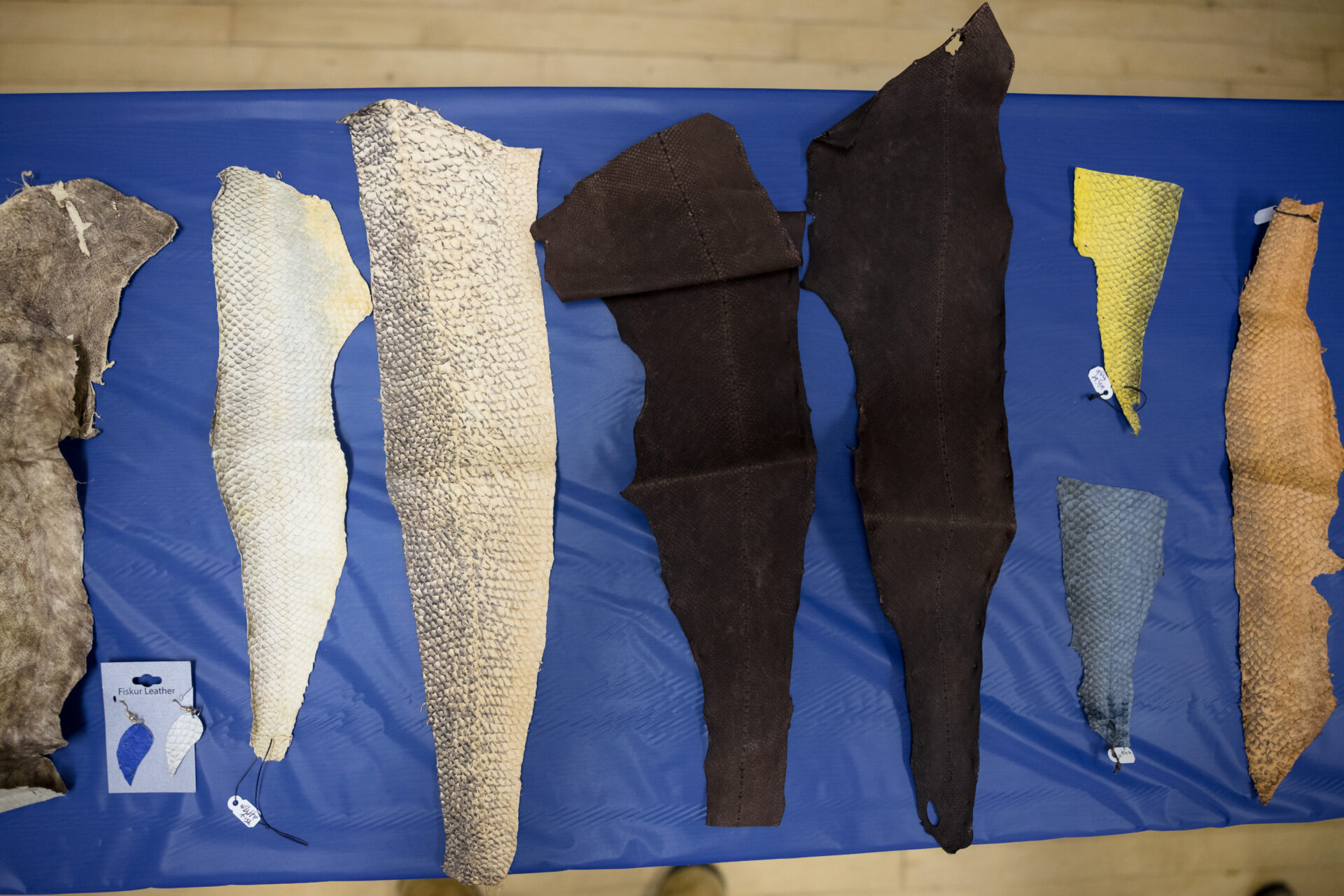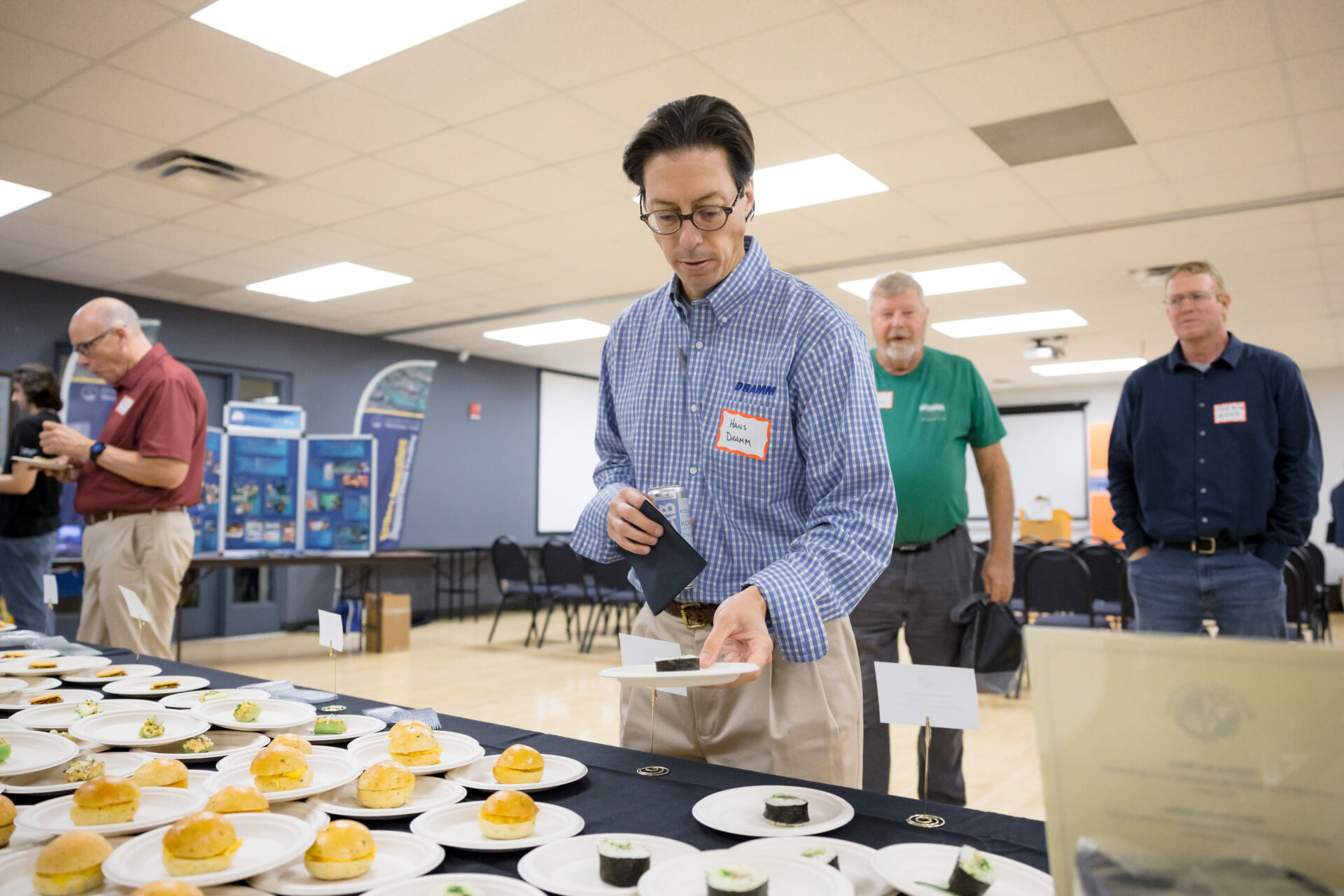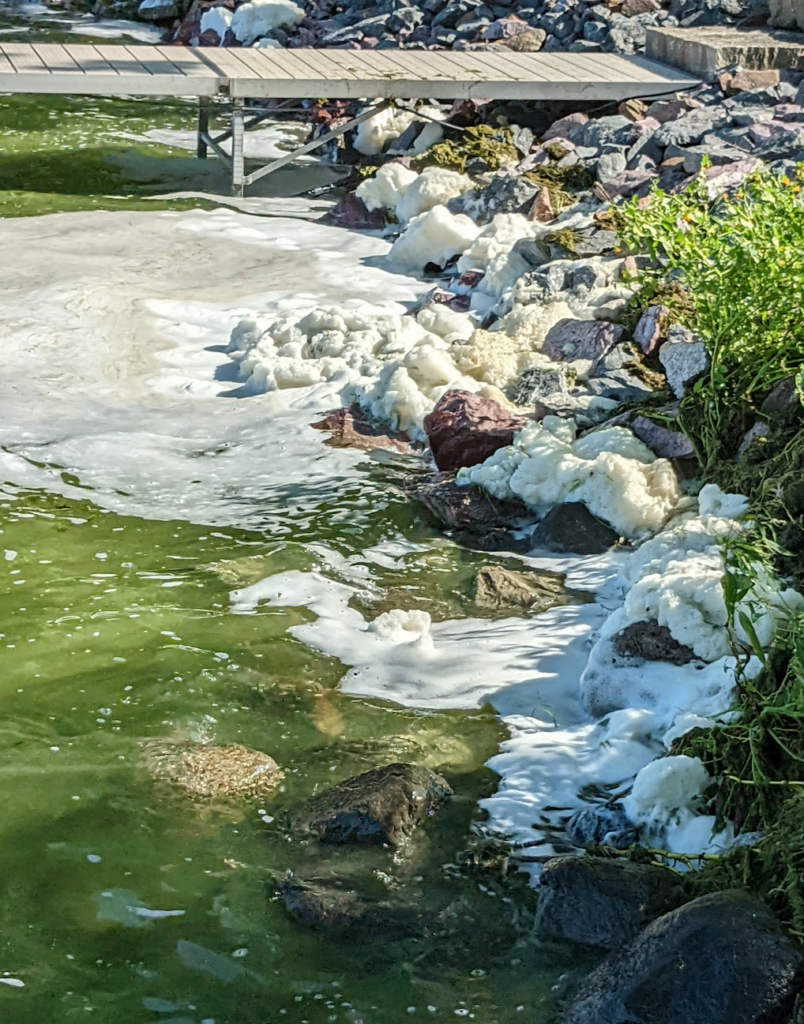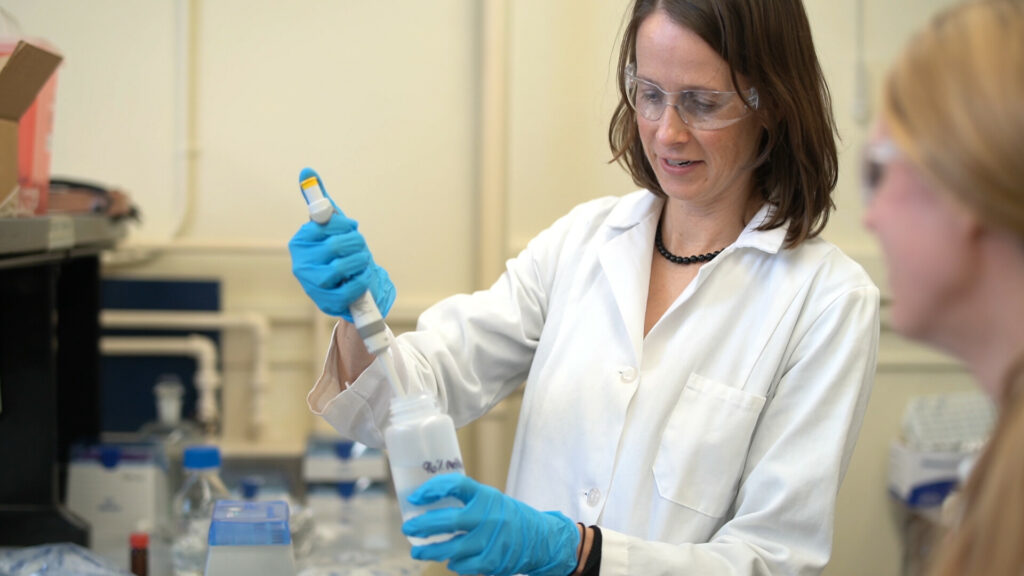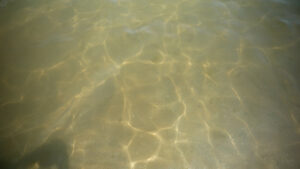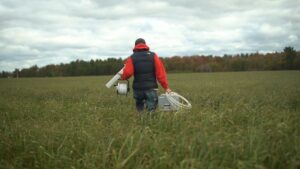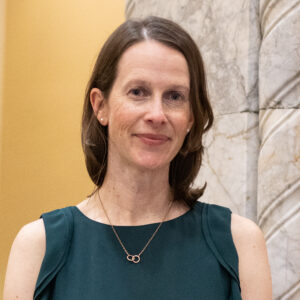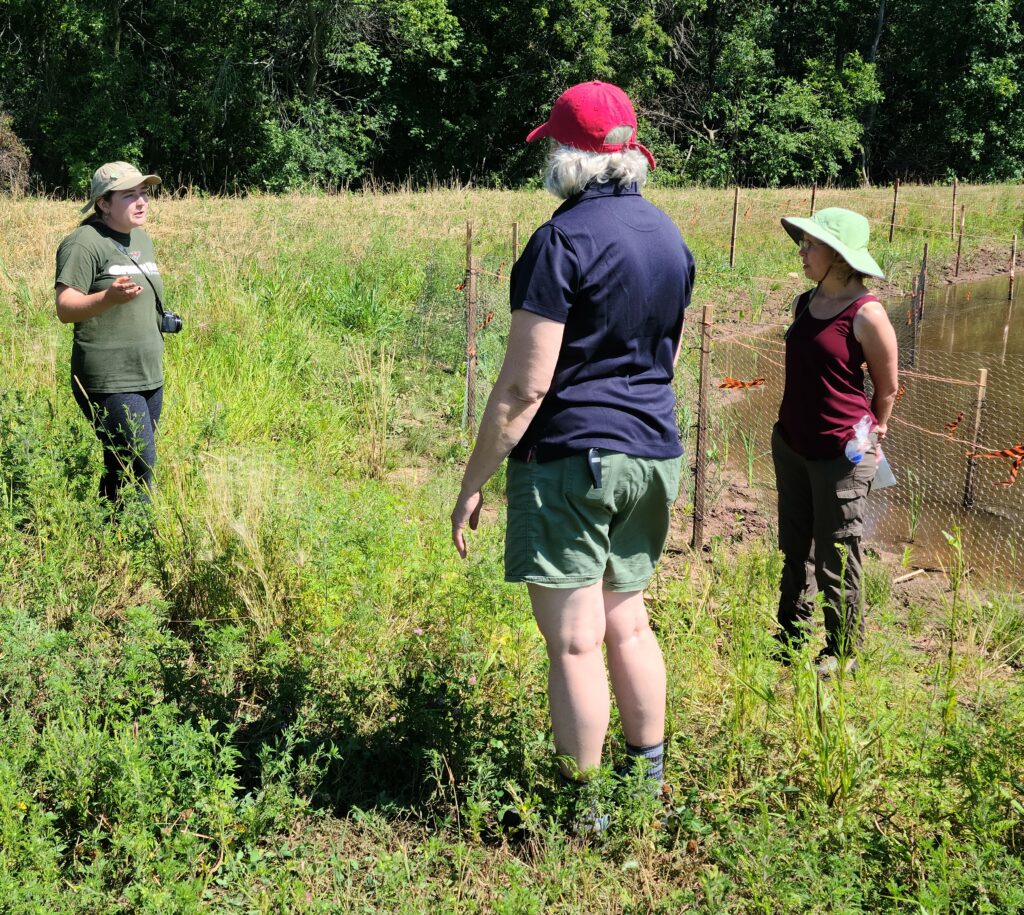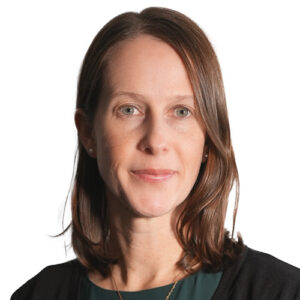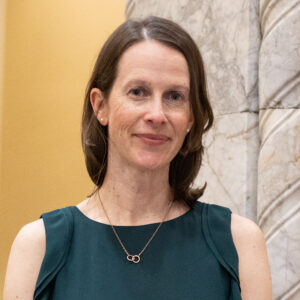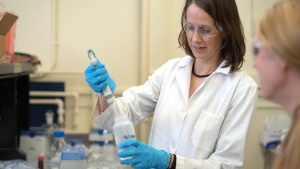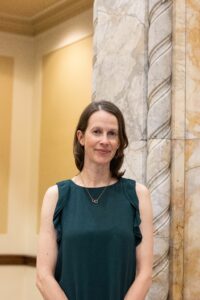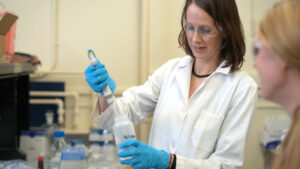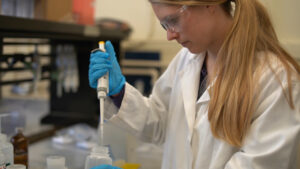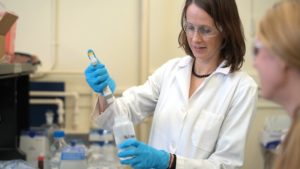Wisconsin Sea Grant says ‘Bon Voyage!’ to a communications legend
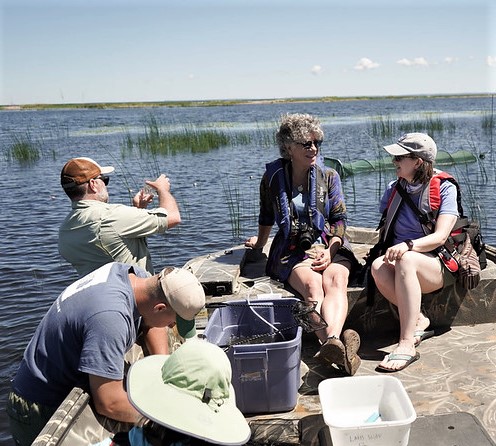
Marie Zhuikov (center) discusses a communications project with former colleague Jennifer Smith during a learning trip on Green Bay.
This spring Wisconsin Sea Grant is sending off Senior Science Communicator Marie Zhuikov to a much-deserved retirement.
Zhuikov has spent the better part of the past three decades writing about Great Lakes water issues and Sea Grant education, outreach and research activities. During her 13 years at Wisconsin Sea Grant, she not only prolifically told wonderful stories about the people researching, educating and working to protect our fragile water ecosystems, she also worked on podcasts, wrote newsletter articles, took amazing photos and managed our Sea Grant’s “Unsalted” blog. Zhuikov also worked tirelessly in collaboration with program scientists, outreach specialists and our staff to build water science literacy around the country.
“It is a bittersweet time for all of Marie’s colleagues,” said Wisconsin Sea Grant Interim Director Christy Remucal. “We are so happy for Marie and wish her well as she moves into this next exciting phase of her life, but we are also sad we won’t have her wealth of science communication experience, unique perspective and warm presence around the office anymore. We thank her for all that she’s done for our Great Lakes – she will be greatly missed.”
Prior to joining Wisconsin Sea Grant in 2012, Zhuikov worked for Minnesota Sea Grant for 15 years. During her time at Wisconsin Sea Grant, she received numerous awards from the Sea Grant Network for her work and also served a stint as a communications consultant on the U.S. Environmental Protection Agency’s Board of Scientific Counselors under the Obama Administration. In her off hours, Zhuikov authored a number of books, including “Meander North” and “The Path of Totality.”
Zhuikov’s last day in the office is March 12 and she retires on April 7.
Congratulations Marie!
The post Wisconsin Sea Grant says ‘Bon Voyage!’ to a communications legend first appeared on Wisconsin Sea Grant.
Blog | Wisconsin Sea Grant
https://www.seagrant.wisc.edu/blog/wisconsin-sea-grant-says-bon-voyage-to-a-communications-legend/


